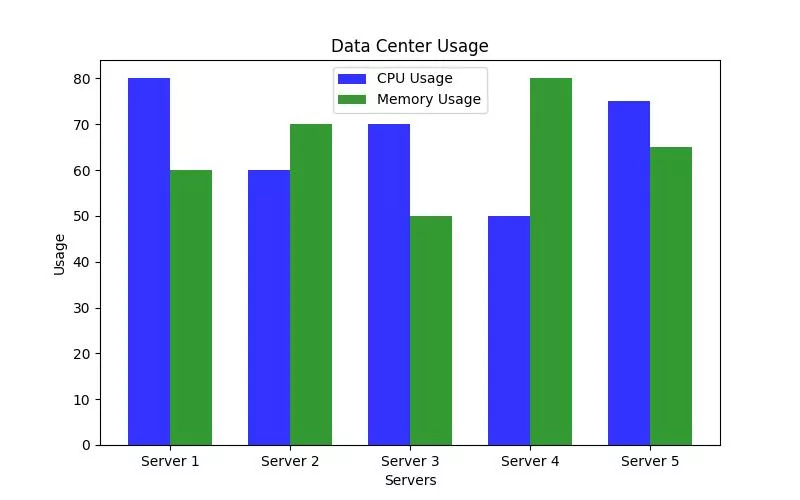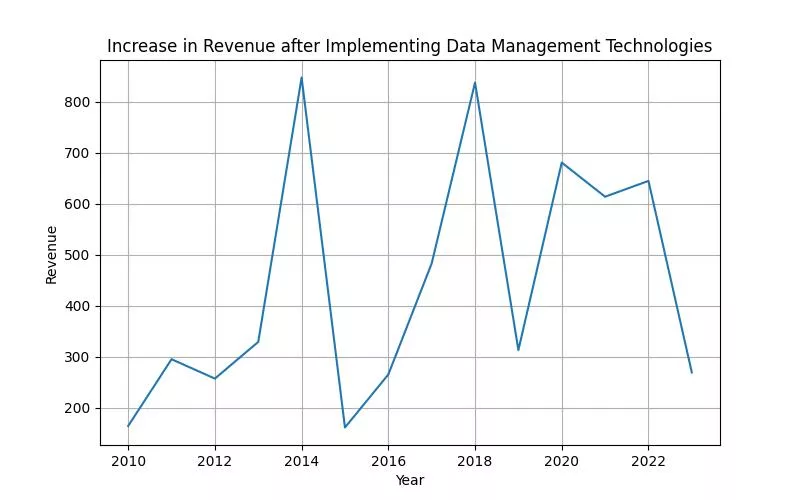Data has become a critical asset for organizations across all industries, but managing and utilizing data effectively can be challenging. Fortunately, technology provides solutions that help organizations manage and utilize data more efficiently. In this article, we will explore which technologies combine to make data a critical organizational asset and provide best practices for effective data management.

Overview of Data Management Technologies
| Industry | Technology | Application |
|---|---|---|
| Healthcare | Big data analytics | Analyze patient data to identify patterns and improve patient outcomes |
| Retail | Data mining | Analyze customer data to identify buying patterns and improve customer experience |
| Finance | Database management systems | Store and manage financial data, such as transactions and customer information |
| Manufacturing | Data warehousing | Collect data from different sources, such as production lines and supply chain, to improve efficiency and reduce costs |
Data management technologies refer to the tools and processes used to manage and utilize data effectively. These technologies include database management systems, big data analytics tools, data warehousing, and data mining, among others.
Database management systems (DBMS) are software applications used to manage and store data. They allow organizations to store, retrieve, and manipulate data efficiently. Big data analytics tools, on the other hand, are used to analyze large and complex data sets. Data warehousing involves collecting data from different sources and storing it in a central repository, providing organizations a single source of truth. Data mining involves the process of extracting valuable insights from large data sets.

Technologies for Making Data a Critical Organizational Asset
- Data management technologies include database management systems, big data analytics tools, data warehousing, data mining, and others.
- AI and machine learning technologies automate tasks, analyze large data sets, provide insights for business decisions, and can be integrated into a single platform for data management.
- Best practices for data management include data quality management, data governance, and master data management.

The Role of Artificial Intelligence and Machine Learning
Artificial intelligence (AI) and machine learning (ML) are two critical technologies involved in data management. AI refers to the ability of machines to simulate human intelligence, while ML involves the use of algorithms to analyze large data sets. These technologies help organizations automate tasks, analyze complex data, and make better decisions.
By using AI and ML, organizations can automate repetitive tasks, freeing up time for employees to focus on more strategic initiatives. For example, AI-powered chatbots can handle customer inquiries, reducing the workload of customer service representatives. ML algorithms can also analyze large data sets, identifying patterns and enabling machines to respond to new situations.
Integrating AI and ML into a single platform for data management can provide organizations with better insights and improve efficiency. For example, a technology intelligence platform can combine AI, analytics, and ML to help organizations gain actionable insights and drive business decisions.

Data Security
As data becomes more critical to organizations, data security has become an increasingly important concern. Organizations must take steps to protect sensitive information and ensure that their data management systems are secure.
Technologies used for data security include encryption, firewalls, and intrusion detection systems. Encryption involves converting data into a code that can only be deciphered with a key. Firewalls are used to protect networks from unauthorized access, while intrusion detection systems are used to detect and prevent unauthorized access to data.
Best practices for securing data include implementing access controls, enforcing password policies, and conducting regular security audits. It is also essential to have a plan in place for responding to data breaches, including notifying affected parties and taking steps to prevent future breaches.
Skilled Professionals
Managing and utilizing data effectively requires skilled professionals who understand the technology involved and can analyze data to gain insights. Key roles in data management include data scientists and data analysts. Data scientists are responsible for designing and implementing data solutions, while data analysts are responsible for analyzing data to gain insights.
Training and development of data management professionals are essential to ensure that organizations have the skills needed to manage and utilize data effectively. This includes providing training on the latest technologies and best practices for data management.
Best Practices for Data Management
Effective data management requires following best practices to ensure that data is accurate, complete, and consistent. Some of the best practices for data management include data quality management, data governance, and master data management.
Data quality management involves ensuring that data is accurate, complete, and consistent. This includes implementing data validation rules, conducting regular data audits, and resolving data quality issues as they arise. Data governance refers to the management of the policies and procedures used to manage and utilize data effectively. Master data management involves ensuring that data is consistent across different systems and applications.
Technologies for Combining Data from Multiple Sources
Combining data from multiple sources can provide organizations with a more complete picture of their operations, customers, and competitors. Technologies for integrating data from different sources include data integration tools, data federation, and virtualization.
Data integration tools are used to combine data from different sources into a single repository. Data federation involves accessing data from different sources without copying the data into a central repository. Virtualization involves creating a virtual view of data from different sources, allowing them to be accessed as if they were in a central repository.
Personal Story: Importance of Skilled Professionals
As a data analyst at a large retail company, I saw firsthand the importance of having skilled professionals in managing data effectively. Our team was tasked with analyzing sales data from multiple stores to identify patterns and make recommendations for inventory management.
At first, we struggled to make sense of the vast amounts of data we had collected. We quickly realized that we needed more specialized training to effectively manage the data. We sought out additional training on data quality management and best practices for data analysis.
After implementing these new practices, we were able to identify trends in sales data that we previously had not noticed. We were able to recommend changes to our inventory management system that resulted in significant cost savings for the company.
It became clear to us that having skilled professionals in data management is crucial for organizations to effectively utilize data as a critical organizational asset. Without proper training and development, data can be overwhelming and difficult to manage.

Emerging Technologies in Data Management
New and emerging technologies are changing the way organizations manage and utilize data. These technologies include blockchain, edge computing, and quantum computing. Blockchain technology is being used to create secure, decentralized databases that are resistant to tampering. Edge computing involves processing data closer to the source, reducing the need for data to be transferred to a central location. Quantum computing offers the potential to analyze large data sets more quickly, enabling organizations to gain insights faster.
Case Studies
Many organizations have successfully implemented data management technologies to achieve their goals. For example, Gartner has developed strategies for efficient and effective digital transformation, which involves using technologies such as AI, ML, and blockchain to manage and utilize data effectively. The technical intelligence officer’s role in national security involves managing and analyzing large data sets to identify potential threats.
Conclusion
Technology plays a crucial role in making data a critical organizational asset by helping organizations manage and utilize data more efficiently. The combination of different technologies, including database management systems, big data analytics tools, data warehousing, and data mining, along with emerging technologies such as AI, ML, blockchain, edge computing, and quantum computing, can help organizations gain actionable insights and drive business decisions. To effectively manage data, organizations must prioritize data security, have skilled professionals in data management, and follow best practices for data management. As emerging technologies continue to evolve, organizations must remain agile and adapt their data management strategies to stay ahead of the curve.
FAQ
What technologies make data a critical organizational asset?
Technologies such as cloud storage, machine learning, and analytics tools.
Who benefits from effective data management?
Organizations of all sizes and industries can benefit from effective data management.
How can data management improve business operations?
By providing real-time insights, improving decision-making, and increasing efficiency.
What are some objections to implementing data management strategies?
Cost, complexity, and the need for specialized skills can be potential objections.
How can businesses overcome objections to data management?
By starting small, identifying quick wins, and building a business case for investment.
What are the risks of not investing in data management?
Missed opportunities, inaccurate insights, and decreased competitiveness are potential risks.
